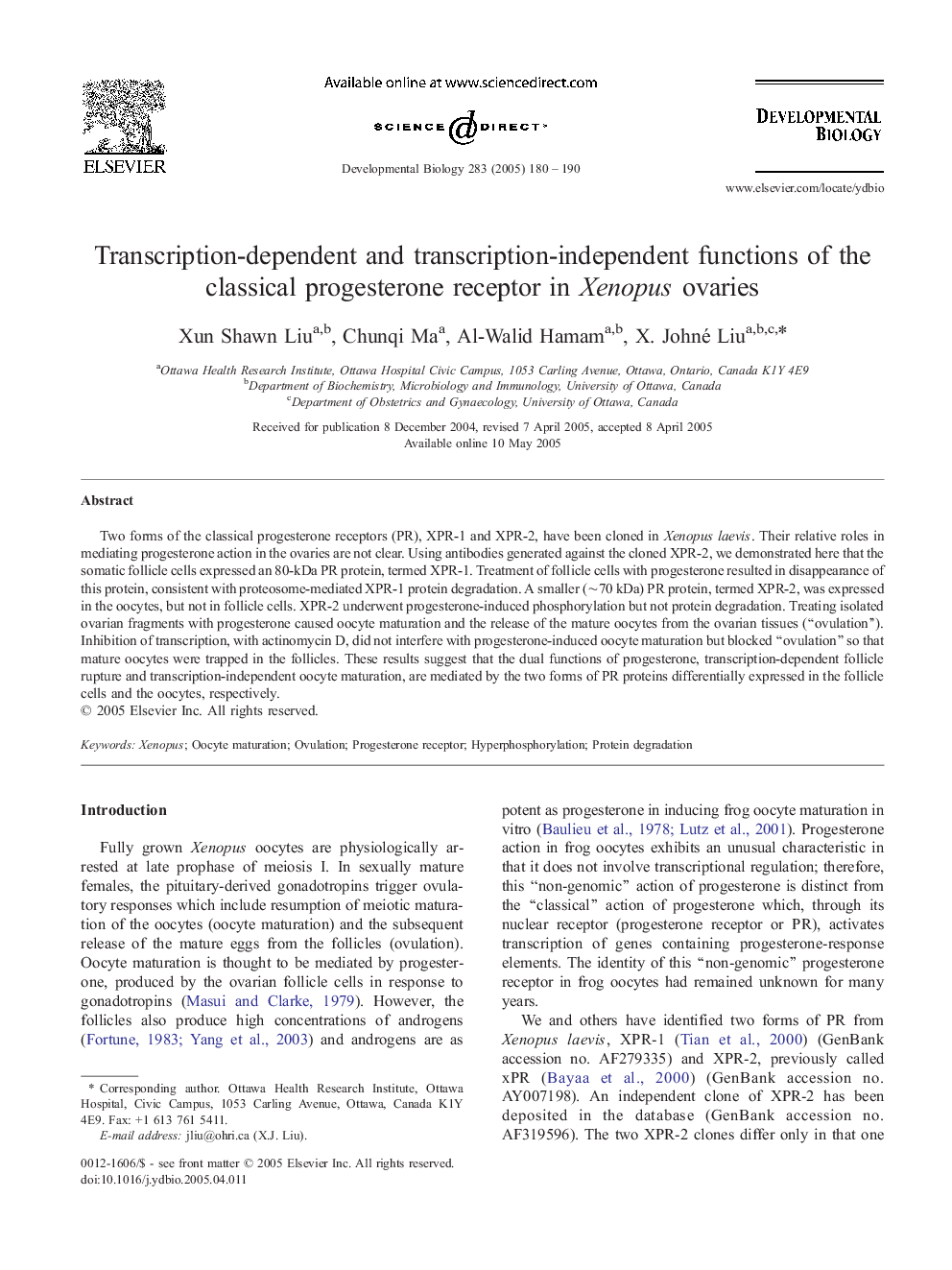| Article ID | Journal | Published Year | Pages | File Type |
|---|---|---|---|---|
| 10934104 | Developmental Biology | 2005 | 11 Pages |
Abstract
Two forms of the classical progesterone receptors (PR), XPR-1 and XPR-2, have been cloned in Xenopus laevis. Their relative roles in mediating progesterone action in the ovaries are not clear. Using antibodies generated against the cloned XPR-2, we demonstrated here that the somatic follicle cells expressed an 80-kDa PR protein, termed XPR-1. Treatment of follicle cells with progesterone resulted in disappearance of this protein, consistent with proteosome-mediated XPR-1 protein degradation. A smaller (â¼70 kDa) PR protein, termed XPR-2, was expressed in the oocytes, but not in follicle cells. XPR-2 underwent progesterone-induced phosphorylation but not protein degradation. Treating isolated ovarian fragments with progesterone caused oocyte maturation and the release of the mature oocytes from the ovarian tissues (“ovulation”). Inhibition of transcription, with actinomycin D, did not interfere with progesterone-induced oocyte maturation but blocked “ovulation” so that mature oocytes were trapped in the follicles. These results suggest that the dual functions of progesterone, transcription-dependent follicle rupture and transcription-independent oocyte maturation, are mediated by the two forms of PR proteins differentially expressed in the follicle cells and the oocytes, respectively.
Keywords
Related Topics
Life Sciences
Biochemistry, Genetics and Molecular Biology
Cell Biology
Authors
Xun Shawn Liu, Chunqi Ma, Al-Walid Hamam, X. Johné Liu,
